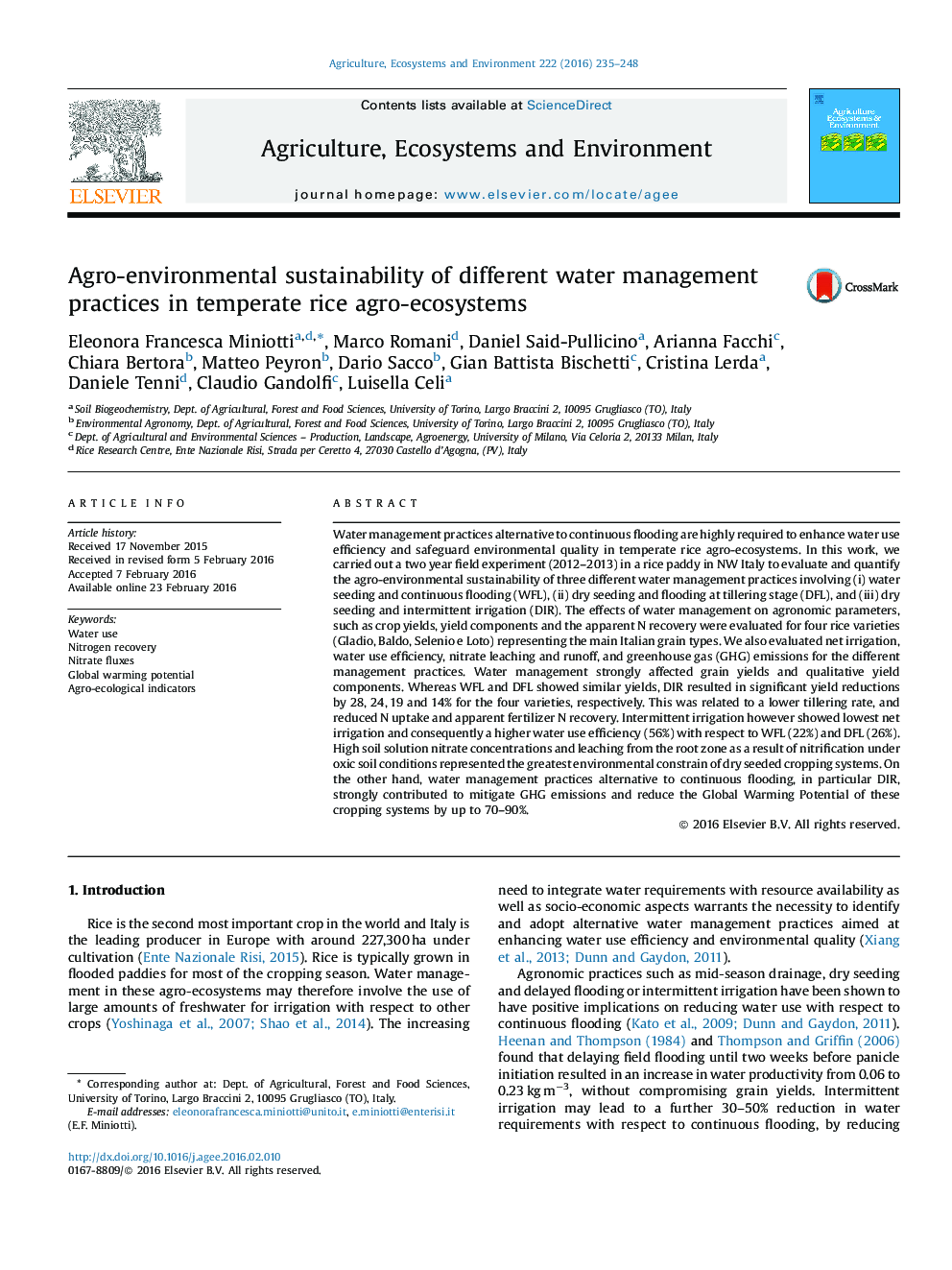| کد مقاله | کد نشریه | سال انتشار | مقاله انگلیسی | نسخه تمام متن |
|---|---|---|---|---|
| 2413596 | 1552030 | 2016 | 14 صفحه PDF | دانلود رایگان |
• Water management strongly affected the sustainability of temperate rice cropping.
• Intermittent irrigation reduced yields, nitrogen uptake and apparent recovery.
• Selenio and Loto performed better than other varieties under intermittent irrigation.
• Alternative water management reduced net irrigation and global warming potential.
• Dry seeding mitigated greenhouse gas emissions but favored nitrate leaching.
Water management practices alternative to continuous flooding are highly required to enhance water use efficiency and safeguard environmental quality in temperate rice agro-ecosystems. In this work, we carried out a two year field experiment (2012–2013) in a rice paddy in NW Italy to evaluate and quantify the agro-environmental sustainability of three different water management practices involving (i) water seeding and continuous flooding (WFL), (ii) dry seeding and flooding at tillering stage (DFL), and (iii) dry seeding and intermittent irrigation (DIR). The effects of water management on agronomic parameters, such as crop yields, yield components and the apparent N recovery were evaluated for four rice varieties (Gladio, Baldo, Selenio e Loto) representing the main Italian grain types. We also evaluated net irrigation, water use efficiency, nitrate leaching and runoff, and greenhouse gas (GHG) emissions for the different management practices. Water management strongly affected grain yields and qualitative yield components. Whereas WFL and DFL showed similar yields, DIR resulted in significant yield reductions by 28, 24, 19 and 14% for the four varieties, respectively. This was related to a lower tillering rate, and reduced N uptake and apparent fertilizer N recovery. Intermittent irrigation however showed lowest net irrigation and consequently a higher water use efficiency (56%) with respect to WFL (22%) and DFL (26%). High soil solution nitrate concentrations and leaching from the root zone as a result of nitrification under oxic soil conditions represented the greatest environmental constrain of dry seeded cropping systems. On the other hand, water management practices alternative to continuous flooding, in particular DIR, strongly contributed to mitigate GHG emissions and reduce the Global Warming Potential of these cropping systems by up to 70–90%.
Figure optionsDownload as PowerPoint slide
Journal: Agriculture, Ecosystems & Environment - Volume 222, 15 April 2016, Pages 235–248
